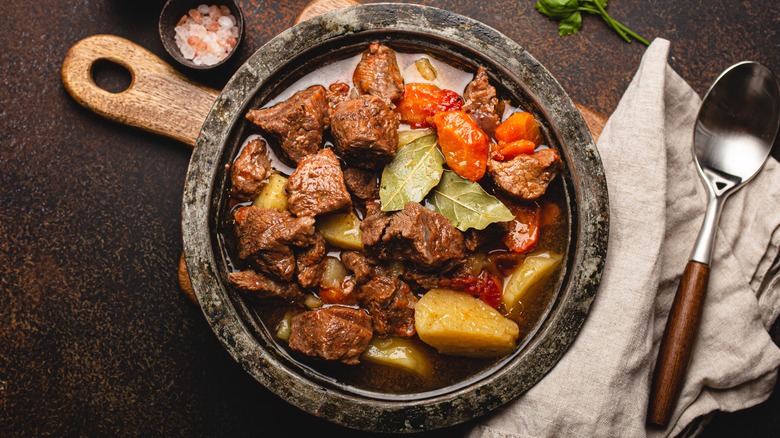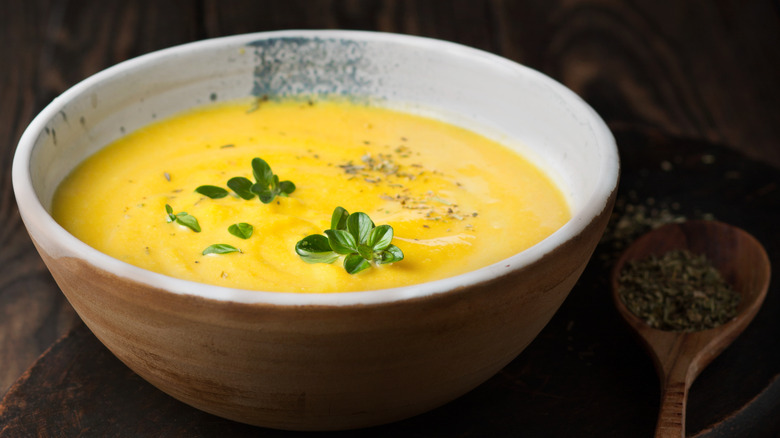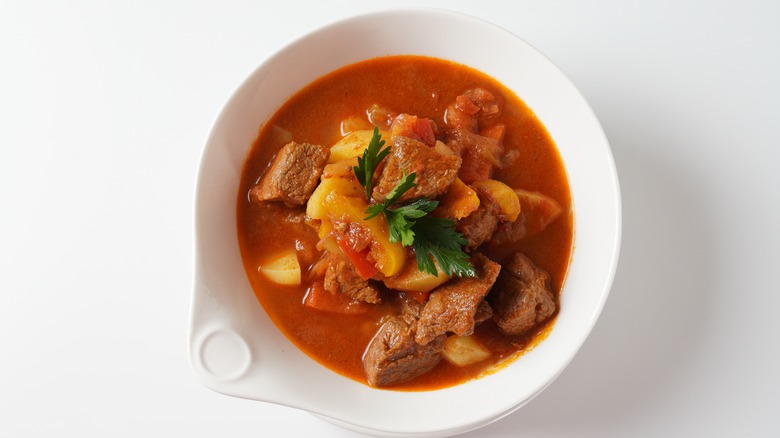What's The Difference Between Soup And Stew?
There are few things as inviting on a cold winter's day as a hot cup of soup or a steaming bowl of stew. Both have that magic ability to drive the chill from our bones and make us feel like we are home again — no matter where we find ourselves.
It is difficult to imagine something as hearty and heartwarming as soups and stews causing strife, but sometimes they do. Among the many debates that foodies often engage in, one of the most prolific is what constitutes a stew and how they differ from soups.
It is time to finally lay this subject to rest and bring a little clarity to the issue. The differences between soups and stews aren't that big, but they are important. Unfortunately, by the end, we may clear up one issue only to create another, but more on that later. For now, let's decide what makes soup, soup, and a stew, stew.
What constitutes a soup
According to Country Living, we find soup described as being primarily liquid based and containing no bits of food that won't fit in a soup spoon. It doesn't matter what the base is. It could be water, milk, broth, or stock. It goes on to add that no bits of food should be larger than can fit easily in a soup spoon and that, as a general rule, soups are quick and easy to prepare, with prep being the most time-consuming part of the process.
Soups can also be served hot or cold. The main part of a soup is the liquid, not the other ingredients, and people most often think of soups as being appetizers more than as a complete meal unto itself.
So basically, if it doesn't have many solids, is mainly liquid, and is served as part of a multicourse meal, you will likely consider it a soup. It doesn't matter whether the soup recipes call for meat, vegetables, or seafood; if it's too chunky, it's not soup.
Fill up with stew
Country Living says that stews are characterized by being chunkier and heartier than soups. Stews traditionally take longer to cook because they have much larger lumps of ingredients, and tough meats are often used that require extended cooking times. In addition, stews contain little or sometimes no liquid at all. If they do, cooks may use beer, cider, or wine to give the dish more depth of flavor. Chefs also often thicken stews using flour or starch to give them more body.
Hopefully, this clears up any confusion you may have felt over the differences between stews and soups. One last thought, though, is where do chilis and some chowders fall? We tend to side with Country Living in that these two examples are stews despite having small bite-size ingredients. The length of time it takes to prepare them, and their hearty consistency makes them a stew in our minds.


